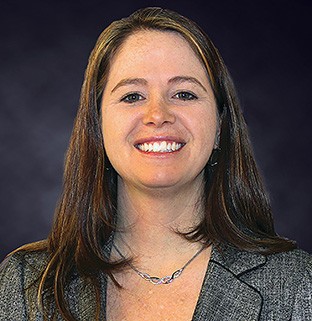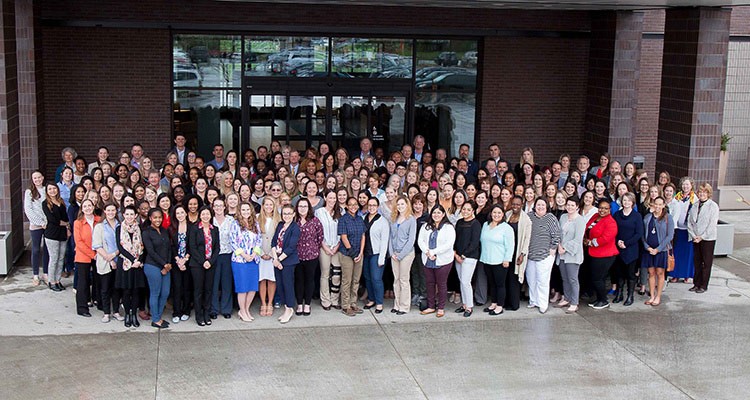Hensel Phelps’ New Blueprint for Success
When Jennifer Scholz thinks about how the CFO role is changing, she remembers the 1999 comedy Office Space. In the film, Milton Waddams is a maltreated collator whose desk is repeatedly moved until finally he is forced to work out of sight in a cluttered basement. To Ms. Scholz, CFO of the $4 billion construction company Hensel Phelps, accounting departments have historically not fared much better. But in recent decades, old pocket-protector stereotypes have become obsolete—and that includes the CFO role.
“While I originally pictured the CFO role as being just part of the accounting department in the background, I have been pleasantly surprised at how my role has been incorporated into company-wide conversations.”
These days, CFOs have become a highly visible part of the C-suite and are now expected to embody and implement a company’s strategic vision as much as any other top executive.
For Ms. Scholz, being CFO means helping her 80-year-old Colorado-based company recalibrate its strategy in the face of rapid technological transformation.
“To be a good CFO, you have to understand what’s going on in the field and understand what the challenges are.”
—Jennifer Scholz, CFO, Hensel Phelps
The construction industry is undergoing a sea change thanks to emerging tools built to leverage real-time video surveillance, augmented and virtual reality, internet of things sensors and artificial intelligence. Drawn by the promise of lower costs and new operational efficiencies, companies are now competing against one another to see who can implement these new tools the quickest—and most wisely. With so much technology to potentially incorporate into development and construction practices, as well as facilities management services—another part of Hensel Phelps’ business—it can be difficult to know which investments to make.
This is where Ms. Scholz steps in. It is not exactly the role she had in mind when she took over as CFO in January 2017. Ms. Scholz had been the company’s controller for the previous five years and an auditor at KPMG prior to that. Neither role had required much involvement with operations.
But as CFO, she is often the one vetting new systems and technologies to determine whether they make sense for Hensel Phelps. It also falls to her to explain these investment decisions: why the company is changing how work has been conducted for decades by adopting one technology over another seemingly promising choice.
In that sense, being a CFO is much more about communications than Ms. Scholz expected. She was trained for the behind-the-scenes number-crunching positions that she held for years. But engaging with the company’s 3,500 employees and diving into strategic decision-making is another skill set entirely. She is candid: “It was a challenge to come into a new role and gain the confidence and the trust of everyone.”
Take the Blinders Off
Just a few months after taking on her new role, Ms. Scholz faced her first big test. Before her predecessor left, he had just begun the process of updating Hensel Phelps’ decades-old accounting system. Now it fell to Ms. Scholz and her team to implement the new system.
“In my first eight months as CFO, we had to change out the accounting system that had been around for 30 years,” Ms. Scholz says.
She can laugh about it now, but it was a painful lesson in the demands of her new position. Ms. Scholz had spent her career acquiring the financial chops to succeed in an executive role, only to learn that she needed an additional set of skills to excel.
“I had the accounting side of it and the finance side of it down. It was the communication that was the biggest challenge for me—and gaining the trust and respect of all those in the field,” she says.
So focused on ensuring the transition logistics went smoothly—that vendors still got paid and the new system worked as planned—Ms. Scholz did not realize employees had questions about the change until alerted by the COO.
“You get blinders on when you’re going through a big project,” she says. “You have to take those blinders off sometimes and step back and look at the big picture. And then ask: Who is affected, and who should you be communicating with on that big picture?”
Once aware of the disconnect between her team and employees across the company, Ms. Scholz took immediate action. She launched a monthly email detailing what changes were occurring and why, as well as how the new system would help employees. Her team also invited employees to submit any ideas for improving accounting practices and processes. Her team ranked them by priority and shared its progress.
If she had to do the implementation over, Ms. Scholz says she would set up better training to prepare employees for the change and teach them the new tools. Still, she sees the project as largely successful: The new system allows information to travel more quickly across the organization, making it easier to identify cost-cutting measures. It also allows Hensel Phelps to implement time-saving technologies such as electronic timekeeping.
“When you go through a big project, people tend to forget about all the good things that have happened along the way,” she says. So her team has tried to amplify the benefits in company communications. But knowing how much information to share with different audiences has been a learning process, she says. “You don’t want to over-communicate. Knowing how to avoid that is something you have to learn along the way.”
Some of the communication challenges she has faced stem from Hensel Phelps’ decentralized nature. The company has 3,500 employees in field offices (and on construction sites) all over the United States, and individual offices operate with some autonomy.
Then there is the fact that Hensel Phelps is employee-owned. Staffers have a stake in high-level decisions not just from a day-to-day work standpoint, but as investors. People feel empowered to ask questions. When they asked why Ms. Scholz wanted to change the accounting system, for example, they were not stubbornly clinging to the status quo: They really wanted to know if it was worth the investment.
“My job is to make sure that I’m getting ROI for employees,” Ms. Scholz says.
“I had the accounting side of it and the finance side of it down. It was the communication that was the biggest challenge for me—and gaining the trust and respect of all those in the field.”
—Jennifer Scholz
In the Know
Regardless of how a company is structured, Ms. Scholz believes that a CFO can only excel if he or she has a finger on the pulse of company operations and employee needs. Monthly meetings with both Hensel Phelps’ board of directors and other executives offer crucial windows into what is going on in the company beyond the financial realm.
“I’m able to hear from the operations side and raise a flag if I hear anything that’s going to have a financial impact,” Ms. Scholz says.
It doesn’t stop there. The challenges posed by the accounting system switch in 2017 taught her that she needed to stay in touch with the company’s workforce beyond headquarters. To that end, she regularly visits field locations to talk to employees about their concerns and ask questions such as, “What keeps you up at night?” The goal is to understand how she can make their jobs easier.
“To be a good CFO, you have to understand what’s going on in the field and understand what the challenges are,” she says. “You become a better CFO the more you can be involved in the operation side of things.” Share on X
Many suggestions for improvements Ms. Scholz gets from employees have to do with implementing new technologies. From aerial drones to improved timekeeping systems, there is huge demand and potential to expedite work and create efficiencies. But not every shiny new object makes sense for Hensel Phelps.
“I am the bearer of bad news sometimes,” she says. “There are so many different applications and technologies out there, but at the end of the day, there is a cost associated with all of them. You can’t just shell out money if you don’t get the return back.”
Ms. Scholz supports the company’s established process to vet employees’ ideas and make recommendations. Sometimes a certain piece of technology may be great for a specific field office but not make sense for broad-scale implementation. From where Ms. Scholz sits, the company should strive to be streamlined. “When you have employees spread out across the United States, it makes it very difficult if we’re all on different platforms.”
She has learned to cautiously consider the potential benefits of new technology.
“I don’t like to move too fast,” she says. “The question is, is the product going to be around in a year or two years or three? You shouldn’t make those decisions quickly. You have to put time, energy and effort into them. My role isn’t easy, but you have to accept the challenge and own what you do.”

 It is not lost on Ms. Scholz that she is in the minority as a female executive—particularly in her industry. Construction is one of the most male-dominated industries in the world: Just 9 percent of U.S. construction workers are women.
It is not lost on Ms. Scholz that she is in the minority as a female executive—particularly in her industry. Construction is one of the most male-dominated industries in the world: Just 9 percent of U.S. construction workers are women.


